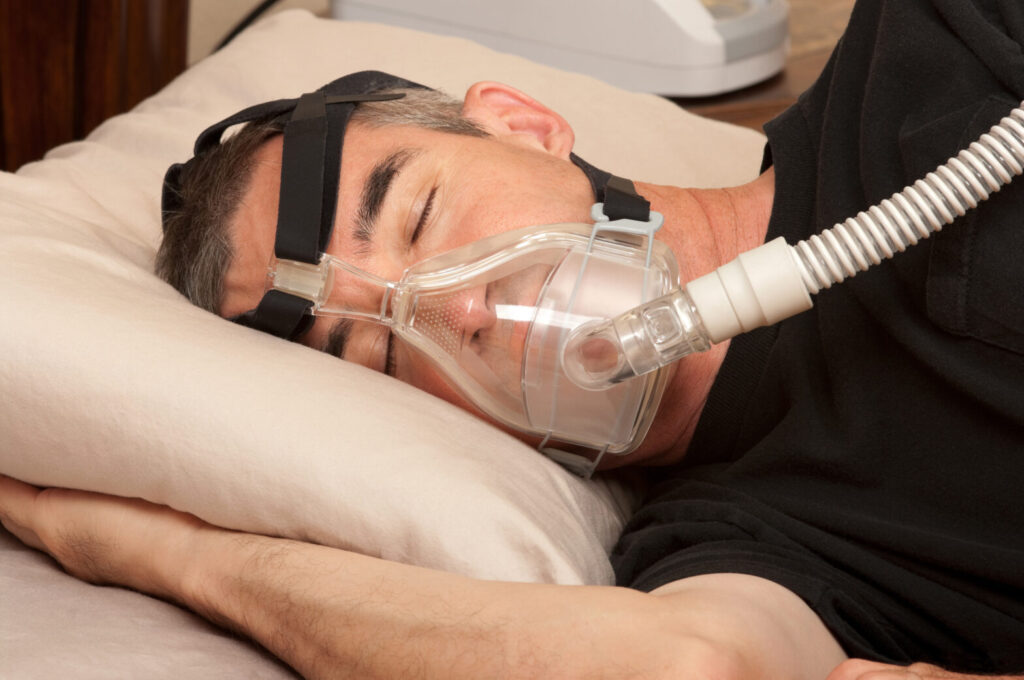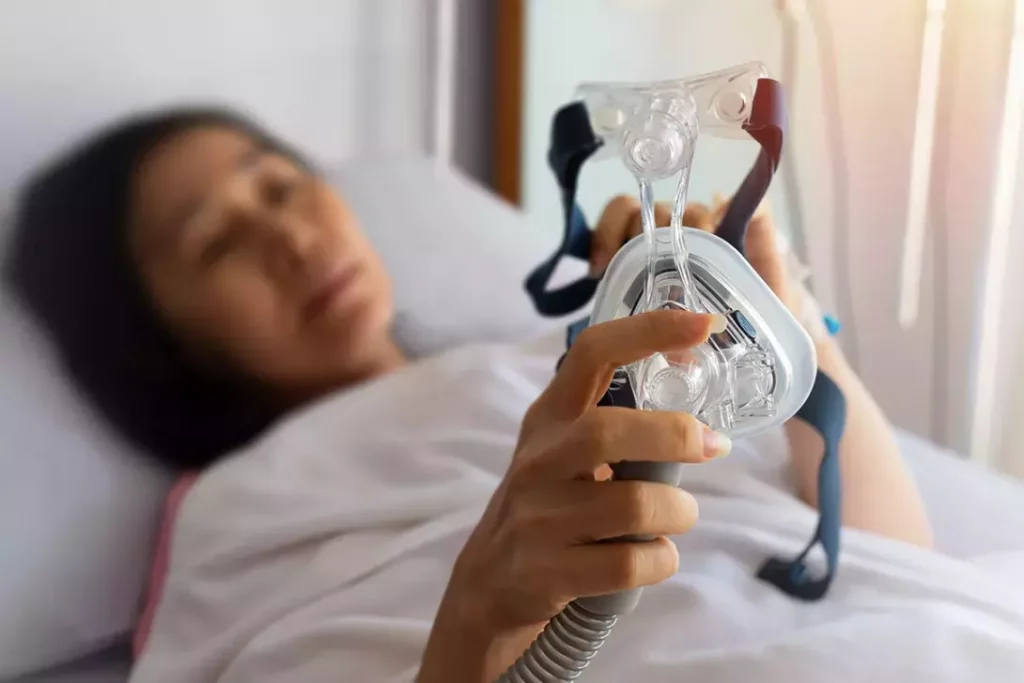Sleep apnea is a prevalent condition that disrupts the sleep of millions of people around the world. For many, CPAP (Continuous Positive Airway Pressure) machines have become a vital part of daily life, offering relief from the debilitating symptoms of sleep apnea and allowing individuals to experience better quality sleep. CPAP technology has come a long way, and as we move into the future, exciting innovations are on the horizon that could significantly enhance the way we treat sleep apnea. In this article, we will explore how CPAP machines work, the types available, the benefits they offer, and what the future holds for sleep therapy technology.
What is Sleep Apnea and How CPAP Machines Help
Sleep apnea is a disorder characterized by frequent pauses in breathing during sleep. These pauses can last for several seconds to minutes and can occur multiple times throughout the night. Sleep apnea can result in fragmented sleep, leading to excessive daytime sleepiness, difficulty concentrating, and long-term health problems.
There are three types of sleep apnea:
See more: Benefits of Home Sleep Test Australia for Better Sleep
- Obstructive Sleep Apnea (OSA): The most common form, which occurs when the muscles at the back of the throat relax excessively during sleep, blocking the airway.
- Central Sleep Apnea: Occurs when the brain fails to send the correct signals to the muscles that control breathing.
- Complex Sleep Apnea: A combination of both obstructive and central sleep apnea.
CPAP machines are primarily used to treat obstructive sleep apnea (OSA). They work by delivering a continuous flow of air through a mask that keeps the airway open, preventing it from collapsing. This helps to improve sleep quality by eliminating breathing interruptions, ensuring individuals receive sufficient oxygen throughout the night, and reducing the associated health risks.
Types of CPAP Machines
As sleep apnea treatment continues to evolve, different types of CPAP machines have emerged to cater to the diverse needs of individuals. The three most common types of CPAP machines are:
- Standard CPAP (Continuous Positive Airway Pressure):
- How it Works: Delivers a continuous stream of air at a constant pressure.
- Benefits: Simple, effective, and cost-efficient, this is the most common CPAP machine prescribed for those with obstructive sleep apnea.
- Limitations: Fixed pressure may not accommodate fluctuations in breathing patterns during the night.
- Auto-CPAP (Auto Adjusting CPAP):
- How it Works: Automatically adjusts the air pressure based on changes in the user’s breathing patterns throughout the night.
- Benefits: Offers a more customized approach, as the machine adapts to the user’s needs, providing optimal pressure at all times.
- Limitations: More expensive than standard CPAP machines due to its advanced features.
- BiPAP (Bilevel Positive Airway Pressure):
- How it Works: Provides two levels of pressure—higher pressure for inhalation and lower pressure for exhalation.
- Benefits: Ideal for individuals with complex sleep apnea or other respiratory issues that make it difficult to exhale against the pressure.
- Limitations: More complex and typically more expensive than standard CPAP devices.
How to Choose the Right CPAP Machine
Choosing the right CPAP machine depends on several factors that suit your personal needs and preferences. Consider the following points when selecting your CPAP device:
- Comfort: Look for features that enhance comfort, such as adjustable pressure, a ramp function (which gradually increases air pressure), and mask options that fit securely without discomfort.
- Noise Level: If you or your partner are sensitive to noise, choose a quieter CPAP machine. Newer models are designed to operate very quietly.
- Portability: For frequent travelers, a compact and lightweight machine with a carry case is ideal.
- Price: While standard CPAP machines tend to be more affordable, Auto-CPAP and BiPAP machines may come at a higher price due to their additional features.
Consulting with a healthcare provider is essential to ensure that you select the right CPAP machine for your specific condition.
CPAP Machine Setup and Usage
Setting up and using your CPAP machine correctly is essential for optimal results. Here’s a step-by-step guide:
- Unbox and Assemble: Begin by connecting the CPAP machine to the power supply and attaching the tubing to the machine and the mask. If your machine includes a humidifier, ensure that it’s filled with water and properly connected.
- Adjust the Settings: Standard CPAP machines come with a fixed pressure that your healthcare provider will set. For Auto-CPAP, the machine will adjust the pressure automatically based on your needs.
- Fit the Mask: Choose a mask that suits your comfort level. There are nasal masks, nasal pillows, and full-face masks. Make sure the mask fits snugly to avoid leaks.
- Start Using the Machine: Turn the machine on before going to bed and let it run throughout the night. Consistent use will help you get the best results from your CPAP therapy.
Troubleshooting Tips:

- Air Leaks: Ensure the mask is properly adjusted and securely fitted.
- Dry Mouth: Use a heated humidifier or consider switching to a full-face mask if you tend to breathe through your mouth.
- Noisy Machine: Ensure the machine is placed on a stable, flat surface to minimize vibrations and reduce noise.
CPAP Machine Accessories and Maintenance
Regular maintenance and the right accessories are key to keeping your CPAP machine functioning well. Here are some essential accessories:
- Masks: Clean your mask daily to prevent bacteria buildup. Replace your mask every 6 to 12 months, depending on wear.
- Tubing: Clean the tubing weekly with warm, soapy water and replace it every 6 to 12 months.
- Filters: Replace air filters every month to maintain clean airflow.
- Humidifiers: Clean the water chamber of the humidifier every week to prevent mold and bacteria growth.
Regular maintenance ensures that your CPAP machine remains in top condition and delivers clean, efficient airflow every night.
Benefits of Using a CPAP Machine
CPAP machines offer several significant health benefits, including:
- Improved Sleep Quality: By eliminating interruptions in breathing, CPAP therapy helps users achieve deep, uninterrupted sleep.
- Reduced Risk of Heart Disease: Untreated sleep apnea is linked to heart disease, stroke, and high blood pressure. CPAP therapy reduces these risks by maintaining optimal oxygen levels during sleep.
- Increased Energy and Focus: With better sleep quality, users experience improved daytime energy, better focus, and improved mood.
- Reduced Snoring: CPAP machines help eliminate snoring, improving the quality of sleep for both the user and their partner.
Common CPAP Machine Problems and How to Solve Them
Despite their effectiveness, CPAP machines may occasionally experience some issues. Here are some common problems and solutions:
- Air Leaks: This is often caused by an improper mask fit or a damaged mask. Adjust the straps or check the mask and tubing for damage.
- Dry Mouth: If you’re experiencing dry mouth, try using a heated humidifier or switch to a full-face mask.
- Discomfort: If the mask feels uncomfortable, experiment with different mask types and consider using a cushion for added comfort.
Cost of CPAP Machines and Insurance Coverage
The cost of CPAP machines can vary greatly based on the type and features:
- Standard CPAP Machines: Typically range from $200 to $800.
- Auto-CPAP Machines: Range from $500 to $1,500.
- BiPAP Machines: Can cost $1,000 or more.
Insurance Coverage: Most insurance plans cover the cost of CPAP machines if prescribed by a doctor. Be sure to check with your insurance provider to understand the coverage and what out-of-pocket costs you may need to pay.
Conclusion
The future of CPAP technology is filled with exciting advancements that promise to make sleep therapy even more effective, comfortable, and accessible. With innovations in comfort features, noise reduction, and machine portability, CPAP machines will continue to improve the quality of life for people with sleep apnea. By selecting the right CPAP machine for your needs, ensuring proper maintenance, and using it consistently, you can enjoy the many health benefits that come with quality sleep and better overall health. Always consult your healthcare provider to find the best CPAP solution for your specific condition.

